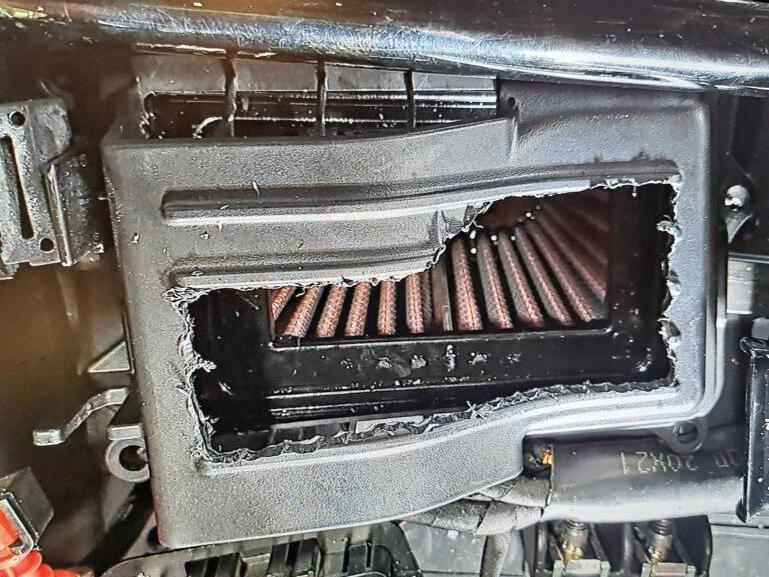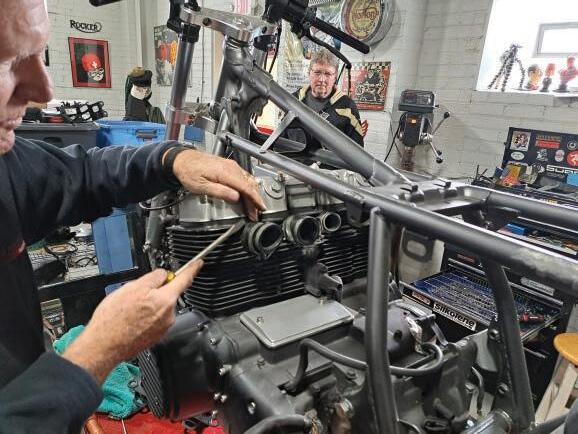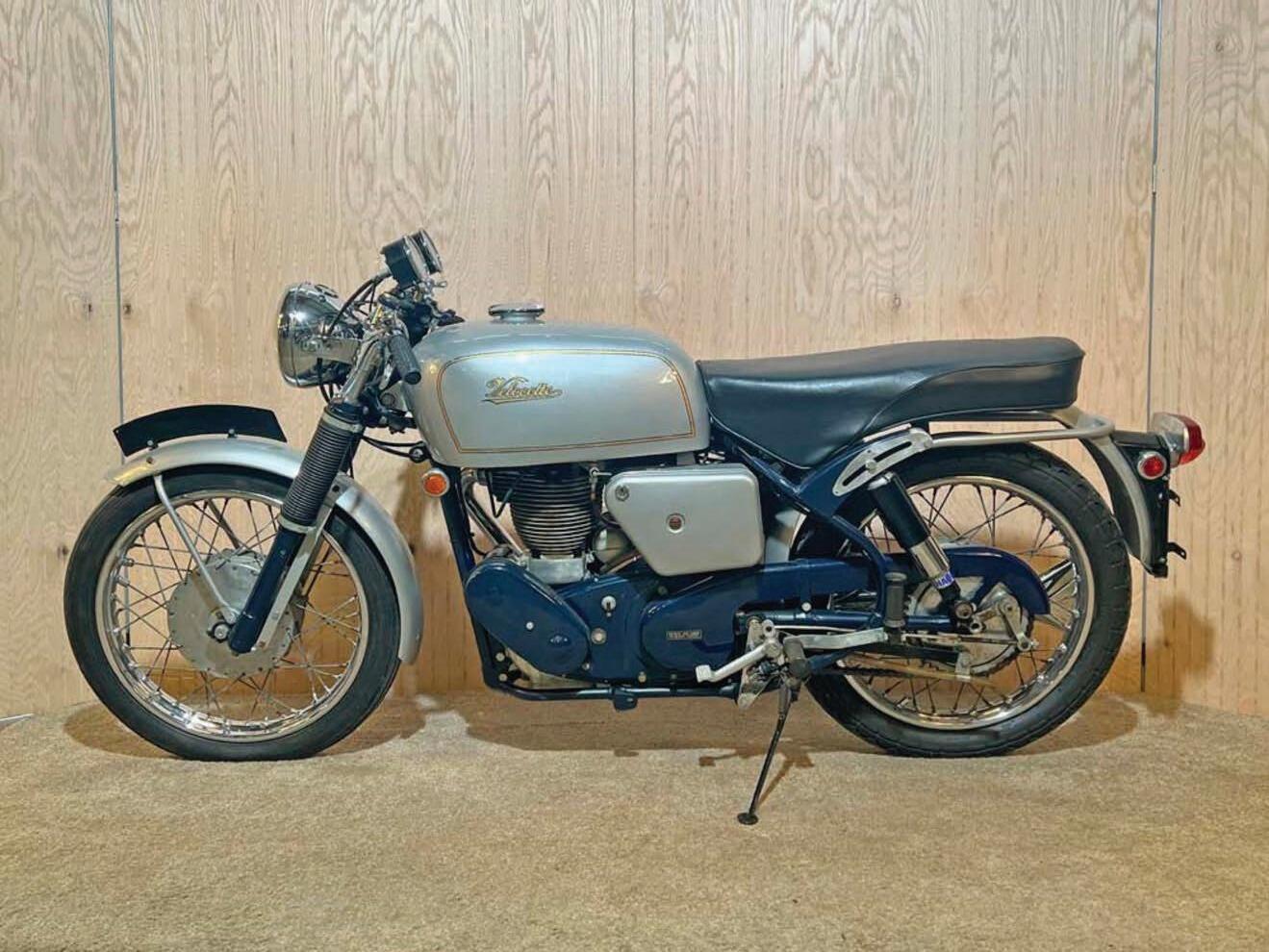
4 minute read
Kick the Tires and Light the Fires
Spring Motorcycle Ride Preparations
By Tech Editor Matt Wiley
Advertisement
Spring has sprung (hopefully) for riders in seasonal areas, and waking your trusty steed from hibernation for the riding season comes with a yearly To-Do List. As with so many things in life, preparation and planning can make or break the outcome. Here are some tips and a checklist to get your bike going again and avoid first ride breakdowns and other issues. Let’s Ride Clyde!
If your motorcycle was blessed, it spent the winter months at The Four Seasons: a climate controlled, weatherproof, varmint-safe environment. This really helps as storage sheds or units, barns or, worse yet, outdoor storage invites a lot of extra issues that can potentially drive you to drink. Either way, pop a cold one or fill the thermos with coffee and here we go.
Take the cover off the bike (you wouldn’t sleep naked with no blanket for several cold, damp months, would you?) and look it over: Are there any fluid spots underneath? If so, then make note of where for further inspection of leakage source. Check the engine, suspension, brakes and look for any leaked battery acid (yikes! please say it ain’t so!)
Are there indications of mouse droppings, spiderwebs or paw prints? Once varmints get out of the weather they look for a home and, unfortunately, motorcycles offer lots of opportunity for winter residence. Airboxes are a favorite of mice as they chew up the air filter to make a nest. Mouse urine is terrible, causing acidic corrosion. Insects like small areas to build mud nests and webs, with the air pipes that run up the sides of a Yamaha Virago frame are notoriously inviting to spiders and wasp/hornet nests.
Tires: If they’re flat, plan to pull both wheels. If the pressure is low, that’s to be expected after a bike has sat idle for a while. If the bike needs to be moved to another location, air up the tires first to ease movement and to inspect for cracking at both sidewalls and tread area.
Note – five years is the maximum safe life for motorcycle tires so check the manufacturing date on the tire sidewall. Tire company websites help explain where to find and how to read these. Old tires, even with good tread, can cause a crash due to old, hardened rubber. Last year on a group ride a fellow went down hard in a moderate corner at moderate speed after the front end tucked. It turns out his front tire was hard as a rock and around eight years old.
Battery: If you haven’t already done so, put the battery on a trickle charger to warm it up and make sure it’s at full charge prior to startup. Note: even well-stored batteries can lose charge capacity or die without regular use. When the battery is back in the motorcycle, run a lighting check and don’t overlook the brake light operation and horn function as car drivers have forgotten we exist over the winter months.
Fluids: Check the oil level and sniff to make sure it’s not contaminated by gasoline. If your ride is liquid cooled, observe the coolant in the recovery bottle for level and cleanliness. The engine coolant should be changed semi-annually as it degrades and becomes corrosive over time. Is the brake fluid visible in the master cylinder sight glass? You may need to remove the filler caps on some models to properly inspect what’s inside.
Brake fluid should be clear and the brake levers and pedal firm. As with engine coolant, brake fluid should be refreshed semi-annually. Open the fuel filler cap and inhale. You’re sniffing for an odor of stale gas or even fuel that’s turned to varnish. If there’s any fumy smells, drain, flush and refill the tank with fresh gas. Today’s gasoline has a short shelf life prior to going stale and losing combustibility.
Carbs: If your motorcycle is carbureted, it’s best to drain the old fuel from them prior to cranking the engine as stale fuel does not want to burn and often fouls spark plugs. Make a shield or funnel by cutting up an old plastic container to make sure old nasty fuel does not stain your engine’s finish (a shield also helps drained gas to reach a catch pan rather than the floor). Models with vacuum-operated fuel petcocks must use the PRIME position on the valve. It’s better this way as opposed to using up your battery cranking power while refilling the carbs. Don’t forget to re-set the fuel knob to the ON position so as not to run out of gas somewhere inconvenient

OK, it’s showtime! After running our checklist, crank the bike up. Hopefully, it starts up easily with no leaks, backfires or belching of some vital fluid. Once it starts up go easy on it, don’t wring the motor’s neck. Let the engine warm up a bit, blip the throttle, but go easy until (hopefully) after the enricher/choke is released at which point the engine will idle and throttle up smoothly. Now it’s time for shakedown ride. Again, go easy – it’s been a while for both you and the bike so take your time to get back into your riding groove.
Should the throttle response be off or if the engine is running a bit rough, add some fuel system cleaner and fresh high octane gas to clear the carb passages or fuel injection nozzles. Pay attention to your bike’s recommended amount of fuel system cleaner because the typical bottle is enough for a 12- to 15-gallon car gas tank. Your motorcycle only holds 3 to 5 gallons, so several treatments can be had from one bottle.

After the shakedown ride, go over the motorcycle again to make sure no leaks have popped up and to confirm that all your bike’s lights are functioning. Lube the chain while it’s still warm from the shakedown ride for best lubricant penetration and allow 20-30 minutes for the chain lube to set-up prior to riding again.
Last check is you, the rider. Do your jacket, boots and gloves all still fit comfortably? How old is that helmet? Does it still fit snugly? Can you see through the visor? Bet you need a new one. How about your riding skills? We all get rusty when not riding regularly. An advanced rider class or track day could be a really nice kickstart to your riding season. It’s only your life at stake after all. Situational awareness is very important to street riding as this is what allows us to see pending situations to avoid or at least prepare for. Now, Go Ride Clyde! CR














